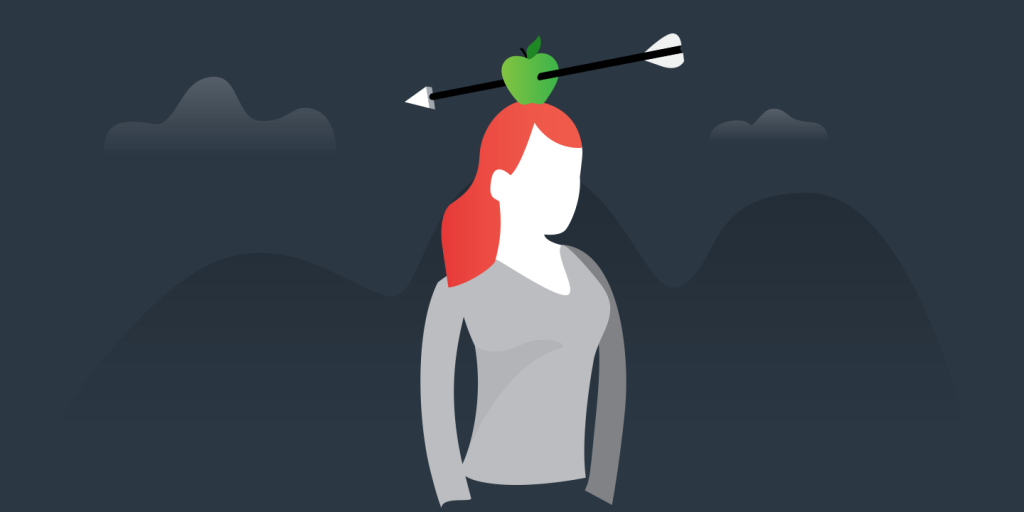Strong communities form an important part of customer retention strategy, because they keep customers coming back for more.
Communities are powerful. Just take the example of a biker gang like the Hells Angels. They are united by their love of Harley Davidson motorcycles, wear identifying clothing like biker jackets and patches, attend regular hangouts, and share values.
Members are immensely loyal to one another and the group as a whole, and the Hells Angels occupy a unique place in the popular imagination.
What does a group like the Hells Angels have to do with your bottom line? Let’s contrast a community strategy against traditional sales tactics. Sales are vitally necessary for your business, but unfortunately not always enthusiastically welcomed by your potential customers. A big reason why customers can feel hostile to sales tactics is because they don’t think they are getting enough in return.
Brand communities can be the antidote to sales hostility. Instead of asking for a sale, communities allow companies to deliver value before the sale even takes place. Customers feel like the relationship is a give and take situation – and this relationship continues even beyond the initial sale.
Strong communities also form an important part of customer retention strategy, because they keep customers coming back for more. A community also grows organically, once you have sown the initial seeds and cultivated your community base.
Just take the ProdPad Slack community. It’s an example of a specific product community that works really well for its members. ProdPad agents not only help their customers with support issues, but customers are building relationships with one another. The product team also tests innovative product features with the community before initiating development. It’s win-win.
 Why community is important for customers
Why community is important for customers
According to Harvard Business Review, one of the top emotional motivators for customers is to feel a sense of belonging. People want to connect with other people even more than they want a product that solves their problem. If you sell someone a good product, they may be a satisfied customer – until they find a better product. But if you welcome someone to a community, they are likely to become a loyal customer for life.
Community makes good business sense. “If people believe they share values with a company, they will stay loyal to the brand,” says Howard Schultz, CEO of Starbucks, showing how community drives brand loyalty. A strong community is one of the reasons that Starbucks is one of the most successful and well-known brands in the world.
Emotions also underpin the events we remember – making customers in your community more likely to remember your brand. If a customer has an emotional interaction with your brand where they feel something, this is more likely to result in their loyalty and repeat purchasing.
According to Harvard Business Review, online communities meet four consumer needs:
- Communities of transaction – where members can complete transactions like buying wines, or booking accommodation, and lacks a social element
- Communities of interest – members socialize around a shared interest like gardening, motorbikes, or a particular product like ProdPad
- Communities of fantasy – members engage in creating new environments, personalities or stories, like creating fantasy sports teams
- Communities of relationship – members congregate around important life experiences and form deep relationships, such as surviving an illness.
Brands are most likely to benefit from fostering communities focused around a mutual interest, such as their product or an industry topic.
 What is community marketing?
What is community marketing?
Communities are people bonded together by a common cause. These groups can be physical but are increasingly online. You may host a community on your own forum, or use another platform like Slack or Facebook. Brand communities will look different depending on whether they are B2B or B2C communities.
B2B communities are more likely to be bonded around the industry – for example, being interested in a certain topic like the Support Driven community, or a product, like the Prodpad community. Building professional relationships and industry learning are often the focus of B2B communities. In B2C communities like the Sephora or Playstation communities, members almost exclusively discuss their experiences using or searching for the brand’s products and build social relationships.
Healthy communities are what customer success, customer experience, and customer loyalty are all about. People relate to and bond with other people, rather than an impersonal product or transactional process. Even more significantly, “Every person is defined by the communities she belongs to,” says Orson Scott Card, American author and essayist.
Your community doesn’t necessarily have to meet offline, although in-person experiences create more powerful connections. For example, ProdPad has significantly reduced its churn rate using only an engaged online Slack community, while the Write the Docs community exists both on Slack, and hosts physical global conferences and meetups.
 The benefits of communities
The benefits of communities
Sales is a one-way passive process that focuses on short term gains, while community is a mutual and active process focused on long-term gain. Communities don’t just exist to give us warm fuzzies – they must exist for a wider purpose to be effective. Being part of a thriving community is beneficial for everyone involved, and can also result in substantial business benefits:
- If customers truly believe in your brand, they will become brand advocates – and happy customers tell nine people about their experience. This is also known as word-of-mouth marketing, and could cross over into influencer marketing. Customers prefer to buy products recommended by people they know.
- View your communities like a type of customer loyalty program meets influencer and word-of-mouth marketing. Communities can leverage the power of reciprocity on a larger scale, and help you with your customer marketing efforts.
- Communities are important for customer retention when your competitors are often now just a click away. An emotional connection is the only thing that ultimately differentiates your brand or product in the eyes of your customers, unless you provide a very niche product or service. Communities offer an abundance of emotional connections, and are ultimately about building relationships.
- Communities can help you gather feedback for your product or brand, because you can send them surveys with beautiful survey software like Nicereply, and create a better customer experience. You can easily test out initiatives before implementing them, and also find out what your customers want the most.
- Forums are a popular way to answer customer questions. Your customers can help each other out without requiring the intervention of one of your agents, ultimately saving you time and resources.
 Driving sustainable business growth
Driving sustainable business growth
As we talked about previously, with the rise of online reviews, social media and an abundance of information, the nature of the selling process has changed. Customers expect your brand to participate in their industry, and give more value than you take.
If you undertake a marketing campaign to increase sales, you will experience short-term sales uplift that tapers off once you end your campaign. Communities keep your customers engaged in the long-term.
Healthy communities are based on authenticity and trust. Emotions cannot be fabricated but can be fostered in a suitable environment. Your community must add value to your customers’ lives, rather than being a time suck or a burden. It’s best to stay away from the hard sell in your communities and focus instead on participation.
There will always be a place for direct sales and pitching products, but it’s time to invest in your existing customers. The best place to start is by asking your existing customers what they would like to get out of a community. They may be looking for some element of professional development, to find answers for questions, or to meet like-minded individuals. Begin with trying to understand the needs of the people who make up your community, and then decide what platform is most suitable to invest in.
 Communities can happen anyway
Communities can happen anyway
Even if you don’t formally call your customers a community, often there is still a shared sense of belonging between users of your products.
Communities can form without anyone actively building them. All it takes is a group of people to congregate around a mutual interest or purpose, and they can grow of their own accord. Mostly, however, someone or a group of people intentionally fosters a successful community.
“We cannot seek achievement for ourselves and forget about progress and prosperity for our community… Our ambitions must be broad enough to include the aspirations and needs of others, for their sakes and for our own,” said human rights activist Cesar Chavez.
Community is about giving something back to others, as well as bringing benefits to your business.









